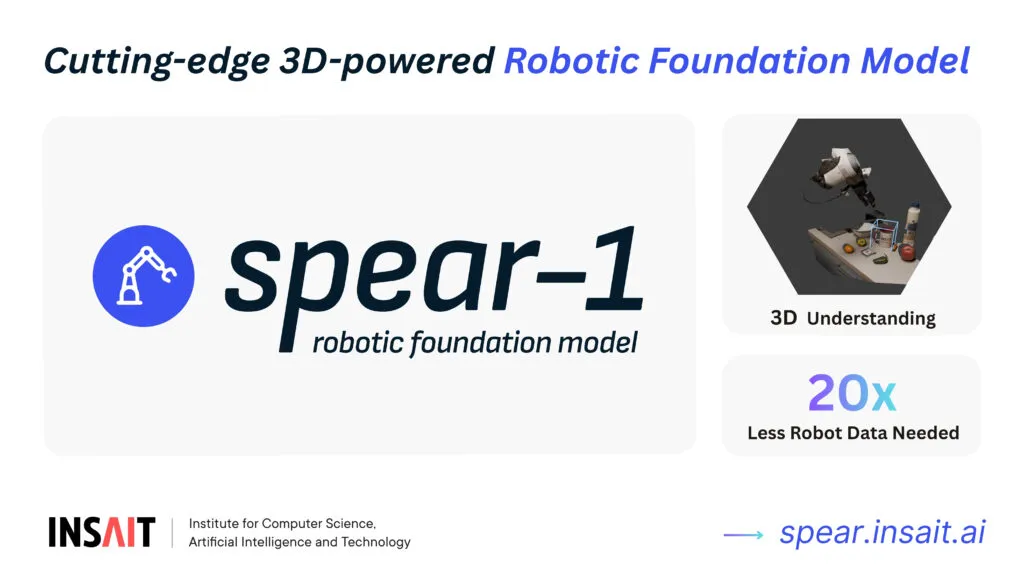Researchers from the Max Planck Institute for Intelligent Systems and ETH Zurich have made a significant stride in the field of robotics with the development of SPEAR-1, a new robotic foundation model that promises to revolutionize the way robots understand and interact with the 3D world. The team, led by Nikolay Nikolov and including Giuliano Albanese, Sombit Dey, Aleksandar Yanev, Luc Van Gool, Jan-Nico Zaech, and Danda Pani Paudel, has addressed a critical bottleneck in the development of Robotic Foundation Models (RFMs), which have shown great potential as generalist, end-to-end systems for robot control but have struggled to generalize across new environments, tasks, and embodiments.
The researchers identified that most RFMs are built by fine-tuning internet-pretrained Vision-Language Models (VLMs), which are trained on 2D image-language tasks and lack the 3D spatial reasoning required for embodied control in the 3D world. To bridge this gap, the team proposed a novel strategy that involves enriching easy-to-collect non-robotic image data with 3D annotations and enhancing a pretrained VLM with 3D understanding capabilities. This approach led to the development of SPEAR-VLM, a 3D-aware VLM that can infer object coordinates in 3D space from a single 2D image.
Building on SPEAR-VLM, the researchers introduced SPEAR-1, a robotic foundation model that integrates grounded 3D perception with language-instructed embodied control. Trained on approximately 45 million frames from 24 Open X-Embodiment datasets, SPEAR-1 has demonstrated superior performance compared to state-of-the-art models such as π0-FAST and π0.5, while using 20 times fewer robot demonstrations. This carefully-engineered training strategy has unlocked new VLM capabilities and significantly boosted the reliability of embodied control beyond what is achievable with only robotic data.
The practical applications of SPEAR-1 in the marine sector are vast and promising. For instance, underwater robots equipped with SPEAR-1 could navigate complex 3D environments with greater ease and accuracy, enabling more efficient inspection and maintenance of offshore structures such as oil rigs and wind turbines. Additionally, SPEAR-1’s ability to understand and interpret language instructions could facilitate more intuitive and effective communication between human operators and underwater robots, enhancing the overall safety and productivity of marine operations.
Furthermore, SPEAR-1’s advanced perception capabilities could be leveraged for environmental monitoring and scientific research in the marine environment. By accurately mapping and identifying underwater objects and features, robots equipped with SPEAR-1 could contribute to the study of marine ecosystems, the detection of pollution and other environmental hazards, and the conservation of marine biodiversity.
In conclusion, the development of SPEAR-1 represents a significant advancement in the field of robotics, with far-reaching implications for the marine sector and beyond. By addressing a critical bottleneck in the development of RFMs and unlocking new capabilities in embodied control, the researchers have paved the way for more intelligent, adaptable, and reliable robotic systems that can operate effectively in a wide range of environments and tasks. Read the original research paper here.

